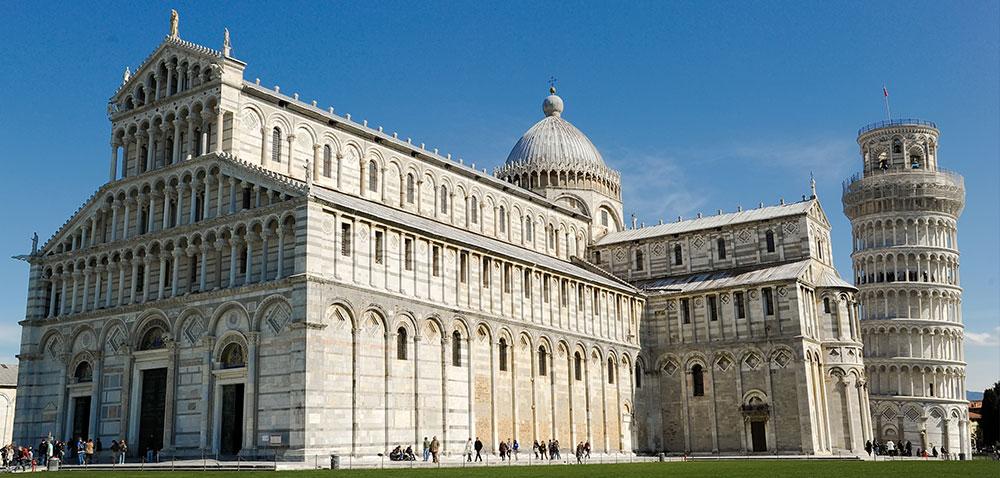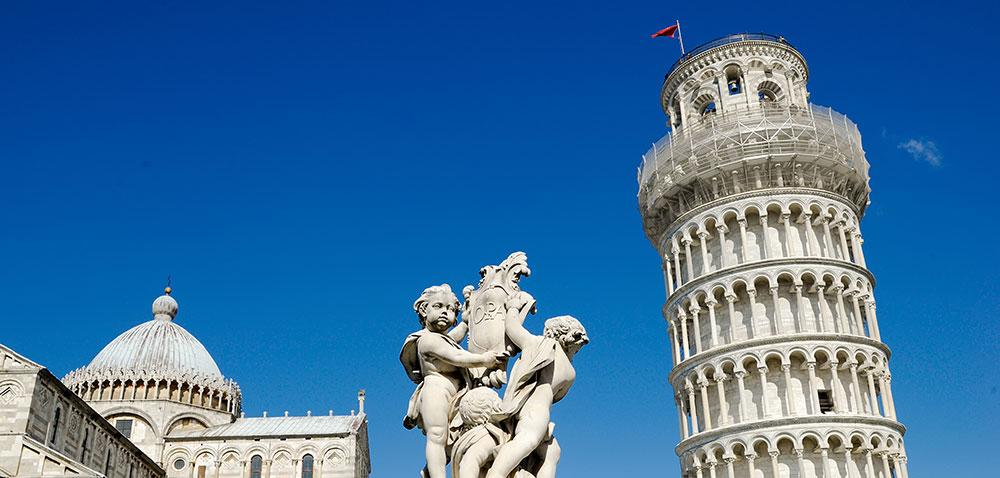A tower born to lean
Tuscany may be known for fine craftsmanship and attention to detail, but every now and then, things don’t quite go to plan. Perhaps one of the most famous design flaws in the region is that of the Leaning Tower of Pisa. Completed over 600 years ago, the freestanding bell-tower of Pisa’s cathedral never has quite managed to stand up straight.
The problems go back to the drawing board. The architect overlooked how strong the foundations would need to be to support such weight on soft ground – and the shape of the fluctuating water table beneath it. As a result, the tower began leaning before construction was even finished. Despite the slant tourists were able to climb the tower for many years, which without security railings at the windows, was a slightly unnerving experience.
The lean got progressively worse over the years and the tower was in very real danger of toppling in 1995, when attempts to fix the problem actually made it worse. Several solutions were proposed over the years, including such surreal plans as attaching hundreds of helium balloons to the belfry to help take the weight, or landscaping the surrounding piazza to slope at the same angle, creating the optical illusion that the tower didn’t lean at all.
Eventually, it was a solution proposed by John Burland, a British man credited with protecting the Big Ben tower during London’s Jubilee line extension, that saved the day. In 1999, using a simple soil-extraction technique pioneered in 1832 by a Victorian engineer, Burland and his team drilled dozens of long, thin holes to the north of the tower, away from the lean. With gaps in the soil, the land gradually moved slightly to the north, slowly correcting the lean of the tower. Disaster was averted and a centuries old problem finally solved.
The problems go back to the drawing board. The architect overlooked how strong the foundations would need to be to support such weight on soft ground – and the shape of the fluctuating water table beneath it. As a result, the tower began leaning before construction was even finished. Despite the slant tourists were able to climb the tower for many years, which without security railings at the windows, was a slightly unnerving experience.
The lean got progressively worse over the years and the tower was in very real danger of toppling in 1995, when attempts to fix the problem actually made it worse. Several solutions were proposed over the years, including such surreal plans as attaching hundreds of helium balloons to the belfry to help take the weight, or landscaping the surrounding piazza to slope at the same angle, creating the optical illusion that the tower didn’t lean at all.
Eventually, it was a solution proposed by John Burland, a British man credited with protecting the Big Ben tower during London’s Jubilee line extension, that saved the day. In 1999, using a simple soil-extraction technique pioneered in 1832 by a Victorian engineer, Burland and his team drilled dozens of long, thin holes to the north of the tower, away from the lean. With gaps in the soil, the land gradually moved slightly to the north, slowly correcting the lean of the tower. Disaster was averted and a centuries old problem finally solved.


